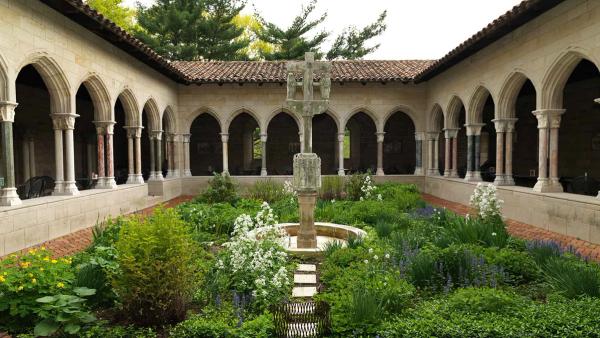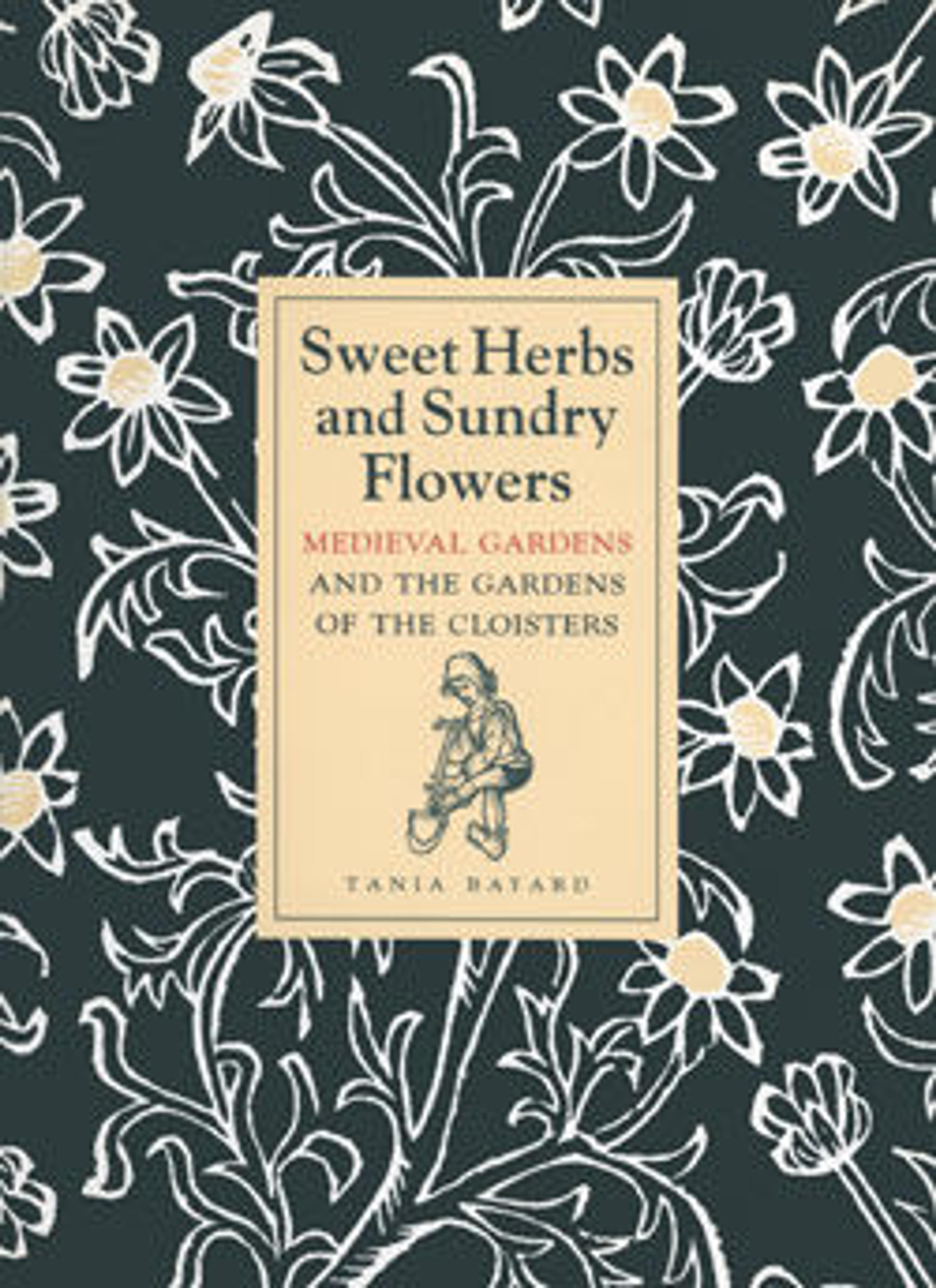Trie Cloister
The flowery meadow familiar from so many medieval works of art is re-created in the Trie Cloister garden, where a multitude of plants blooms in different seasons on a ground bordered with periwinkles. The fragrant display is accompanied by the sound of running water from the central fountain, which is composed of late medieval and modern elements. Together with the chirping birds, butterflies, and bees, the plantings transform this delightful enclosure into a vivid display of the flora and fauna seen in tapestries of the Middle Ages.
Artwork Details
- Title: Trie Cloister
- Date: late 15th century
- Geography: Made in Pyrenees, France
- Culture: French
- Medium: Marble
- Dimensions: 35 ft. 8 in. x 47 ft. 2 1/2 in. (10.9 x 14.4 m)
- Classifications: Sculpture-Architectural, Sculpture-Marble
- Credit Line: The Cloisters Collection, 1925
- Object Number: 25.120.135–.971
- Curatorial Department: Medieval Art and The Cloisters
Audio

Trie Cloister
Gallery 12
NARRATOR: In this little cloister, called the Trie cloister, you can sense the combination of shadow and light, shelter and exposure to the sky. If you're here in warm weather, the flowers are blooming, in an informal garden modeled on images like the Unicorn tapestries. You can hear the water of the fountain, and the sounds of the café. The cloisters of the middle ages too, of course, were once full of human activity.
Take a look at the columns. The many different colored marbles create a rich effect, and the white marble blocks on top are all carved differently. Some of the bases have engaging details too: near the spot where you entered, on the base below a pink pair, there's the head of a beast with another animal in its mouth.* The next pair has a monster with wings and a face on its chest, pitted against a hero armed with a club and shield. Continue walking, and around the corner you'll find sacred subjects: the first one in the row depicts the birth of Jesus, with his mother Mary lying on a bed that spans the space between the columns. In the middle ages, it would not have been uncommon to mix sacred themes with worldly ones, but when these elements were installed here, they were separated in the different arcades. We know nothing of the way they were arranged in the cloister for which they were made, because it was destroyed in the sixteenth century in a bout of violent iconoclasm, the fate of many fine monastic monuments.
More Artwork
Research Resources
The Met provides unparalleled resources for research and welcomes an international community of students and scholars. The Met's Open Access API is where creators and researchers can connect to the The Met collection. Open Access data and public domain images are available for unrestricted commercial and noncommercial use without permission or fee.
To request images under copyright and other restrictions, please use this Image Request form.
Feedback
We continue to research and examine historical and cultural context for objects in The Met collection. If you have comments or questions about this object record, please contact us using the form below. The Museum looks forward to receiving your comments.
